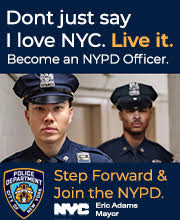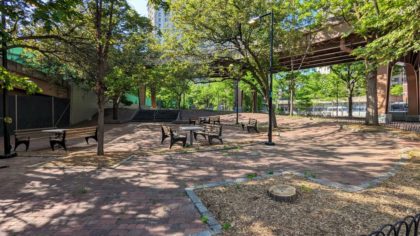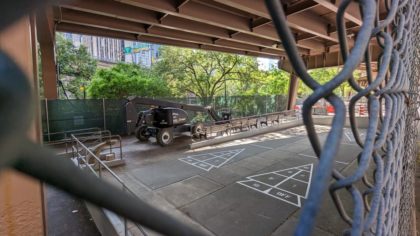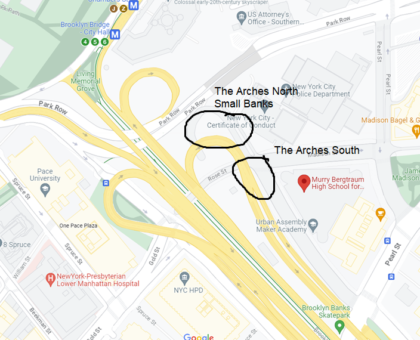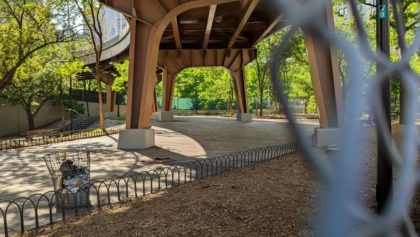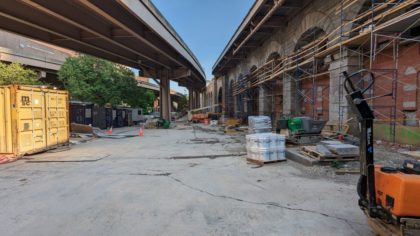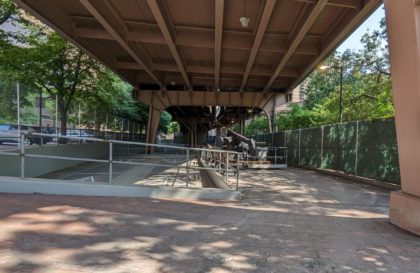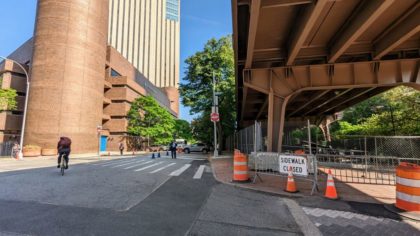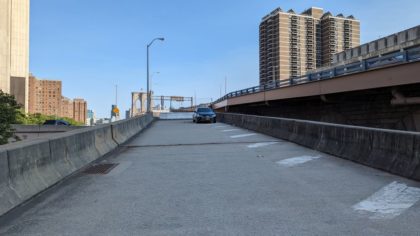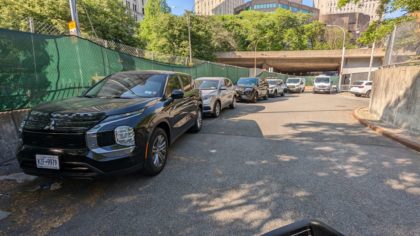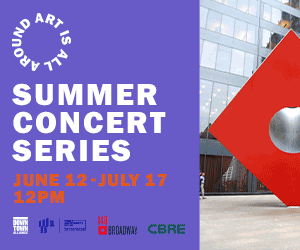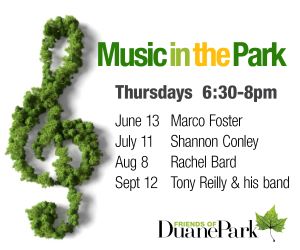Parts of the Brooklyn Banks will open on May 24
The mayor announced that the city will finally reopen parts of the Brooklyn Banks, the public park under the anchorage of the Brooklyn Bridge that was closed more than a dozen years ago, after an alliance of skateboarders and community residents put together a plan for what they are calling Gotham Park. The opening is May 24.
The city is calling this first one-acre segment “The Arches,” though skateboarders long ago dubbed it the Small Banks. The space, largely in the shade of a vestigial ramp of the Brooklyn Bridge, has one paved southern section with painted lines for basketball, pickleball and shuffleboard, as well as a larger brick-paved passive seating area just to the north. It’s surprisingly bucolic under there — the sounds off the bridge are more of a distant thrum than a rumble and the trees are huge and beautiful.
(To get there, walk down Park Row and east down Frankfort, on the north side of Pace, then cross underneath the bridge at Rose Street, which is a tiny section of Madison — you can barely see the walkway because of the NYPD barricades, but it’s there. The park areas are on the north side of the bridge ramps alongside the Avenue of the Finest, which may have a real name but it’s just one block between Madison and Pearl.)
The Adams administration said it will start discussions this spring to evaluate other spaces in the neighborhood for potential upgrades — and I am assuming that means reopening the actual Brooklyn Banks — the skateboard park that started it all. Right now that area is still under construction, as it has been since 2010. Skateboarding pioneer Tony Hawk has been working with the community nonprofit Gotham Park and City Hall for more than a year to ensure that part of the plan comes together.
Not sure who plays shuffleboard these days, or where the equipment will be stored for that or pickleball. But we can also leave it to the kids at Murry Bergtraum High School to figure out how to activate that area. It might be helpful to add handball walls, since I don’t see the kids playing a lot of pickleball during free period. Perhaps it will evolve.
The DOT began its $800 million rehabilitation of the bridge in 2010 (the city closed the Banks temporarily for the same reason in 2004 and then permanently six years later). The projects include cleaning of the bridge’s granite stones for the first time since its original construction, (they will turn from brown to bright grey as a result); replacing mortar between individual stones using cement sourced from the same upstate New York quarries used by members of the Roebling family; and recreating the original red-brick archways. The 12-year project is expected to finish later this year.
Of course this is exciting — the Gotham Park folks have identified the potential for nine acres of new public open space in the area. But it’s also sad, and the cynic in me can’t help but sigh. It took more than a decade of agitation and needling from the community of skateboarders — many of whom had aged past the point of needing a skatepark — to get this on anyone’s radar. When I listened to CB1 Waterfront Committee meeting that skateboarders requested in November 2020, one of the principals of Murry Bergtraum was desperate for open space for his students.
The city created the court area in a couple months but since 2010, it has been disassembling the park areas as they restored the bridge. It was the removal of the bricks that motivated a student at Pace to start a movement to save the area.
Meanwhile, there are acres of private parking, even now. The private cars belonging to NYPD officers are parked all the way up the vestigial ramp of the Brooklyn Bridge — you don’t even need a fake permit over there! There’s also private car parking for the school, and a couple yards that have private cars for what I am guessing is DOT, since it looks fenced off for bridge work.
So yes, the city deserves credit for getting this done and done fast, but I can’t help but wonder how it got this way to begin with — and what would have happened if skateboarders hadn’t raised the alarm.





